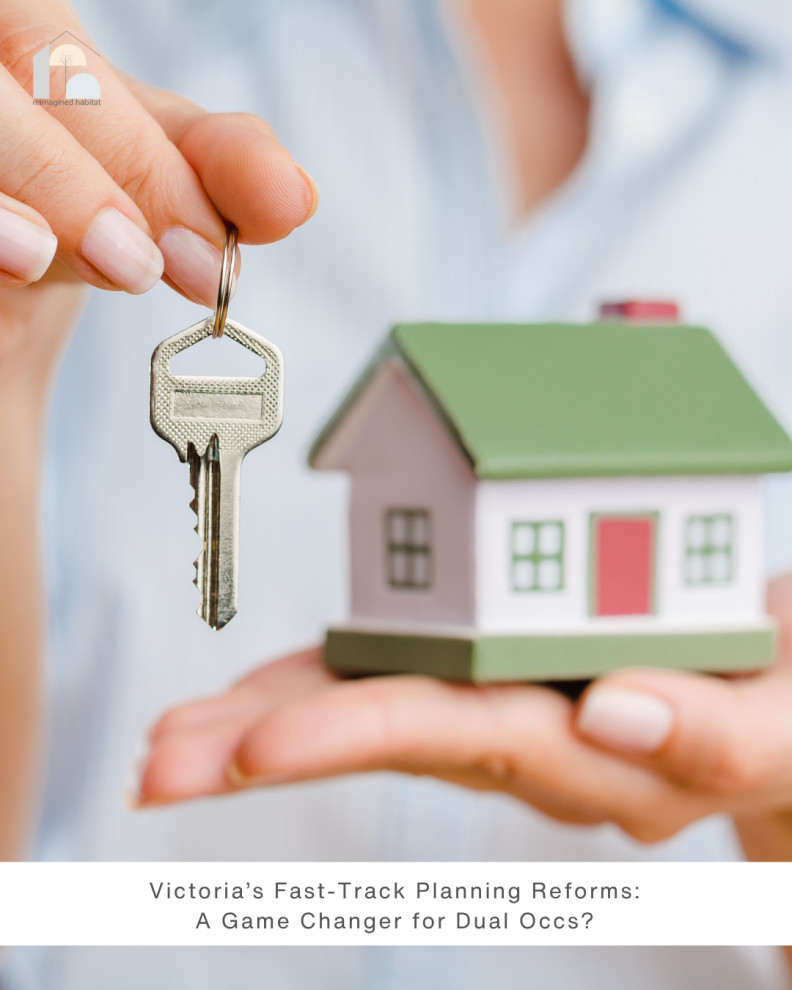Victoria’s Fast-Track Planning Reforms: A Game Changer for Dual Occs?

Big Changes for Victoria: Fast-Tracking Dual Occs and Townhouse Developments
Could this be a game changer for housing supply and affordability?
Victoria’s housing landscape is about to shift in a big way.
From 16 October 2025, new planning reforms under Amendment VC288 will come into effect — introducing faster, simpler approval pathways for dual-occupancy developments and two-lot subdivisions across many residential zones.
It’s one of the biggest shake-ups to Victorian planning in years — and it could dramatically change how quickly small-scale housing projects move from design to construction.
But what exactly is changing? And could this be the boost our housing system needs, or are there new challenges waiting in the fine print?
Let’s break it down.
What’s Changing?
Under the new reforms, most dual-occupancy and two-lot subdivision applications will now qualify for assessment under the VicSmart pathway — a streamlined process designed to cut red tape and speed up decision-making.
Here’s what that means in practice:
✅ 10-day turnaround for Council decisions
✅ No public notification or third-party appeal rights
✅ Reduced Council discretion when assessing applications
In short, it’s a faster, simpler, and more predictable process — a welcome change for anyone who’s spent months (or years) waiting for planning approvals to move forward.
What Land Is Affected?
The new fast-track provisions apply across six key residential zones:
- General Residential Zone
- Neighbourhood Residential Zone
- Residential Growth Zone
- Housing Choice and Transport Zone
- Mixed Use Zone
- Township Zone
So whether you’re planning a small dual-occ project in the suburbs or a two-lot subdivision in a regional town, this could make your journey a lot smoother.
How to Qualify for the VicSmart Pathway
To access the faster approval stream, your proposal needs to tick a few key boxes.
For dual-occupancy developments, that means:
- All planning triggers fall within VicSmart criteria
- No breaches of restrictive covenants
- Recent clearance from relevant referral authorities
- Compliance with 13 essential Clause 55 standards — including setbacks, site coverage, tree canopy, overshadowing, and overlooking
For two-lot subdivisions, the rules are similar. Projects qualify when:
- Each lot contains (or will contain) a single dwelling
- The land isn’t in a bushfire-prone, environmental audit, or character overlay area
- Any necessary referral authority approvals are secured in advance
The reforms also expand the VicSmart pathway for subdivisions within certain overlays, including Environmental Significance, Heritage, Design and Development, Built Form, and Special Building overlays.
What This Means for Council Assessment
Under the new VicSmart process, Council’s assessment will focus on only the essentials — things like:
- Height and garden area controls
- Key Clause 55 standards for dual-occ projects
- Core Clause 56 standards for two-lot subdivisions (lot area, access, stormwater management, etc.)
- Public open space contributions
In other words, the system will shift from subjective design debates toward objective, performance-based standards.
That’s great news for efficiency — but it also places more responsibility on designers and builders to get the technical details right before submission.
The Potential Upside — and the Catch
On the surface, this change could be a major win.
✅ Faster approvals mean more homes delivered sooner.
✅ Reduced complexity can make small-scale infill projects more viable.
✅ Less uncertainty encourages more people to invest in dual-occs and gentle density.
But — as always — the devil is in the detail.
The lack of public notification and third-party appeal rights will raise concerns in some communities, particularly around neighbourhood character, privacy, and infrastructure capacity.
There’s also a risk that, in the race to build faster, we compromise on quality, performance, or sustainability — something we’ve seen too often in the past.
That’s why now, more than ever, it’s critical that good design and building science lead the way.
The Bigger Picture — Speed and Quality Can Coexist
If implemented thoughtfully, these planning changes could help unlock more small-scale, well-located housing — something Victoria desperately needs.
But streamlining approvals doesn’t mean lowering standards. In fact, it’s an opportunity to set a new baseline for quality and performance.
By embedding Passive House principles, prefabricated construction, and smarter planning from the start, we can create homes that are:
- Quicker to deliver
- More energy efficient
- Healthier for occupants
- Built to withstand our changing climate
Because the real success of these reforms won’t be measured just by how many homes we build — but by how well they perform for the people who live in them.
The Bottom Line
Big planning reforms like this don’t come around often — and they’ll take time to settle in. But for designers, builders, and homeowners alike, this new VicSmart fast-track could mark the beginning of a smarter, more responsive housing system.
Used well, it could help Victoria deliver more homes — faster, fairer, and better.
For anyone considering a dual-occupancy or subdivision project, now’s the time to understand how these changes might shape your plans
